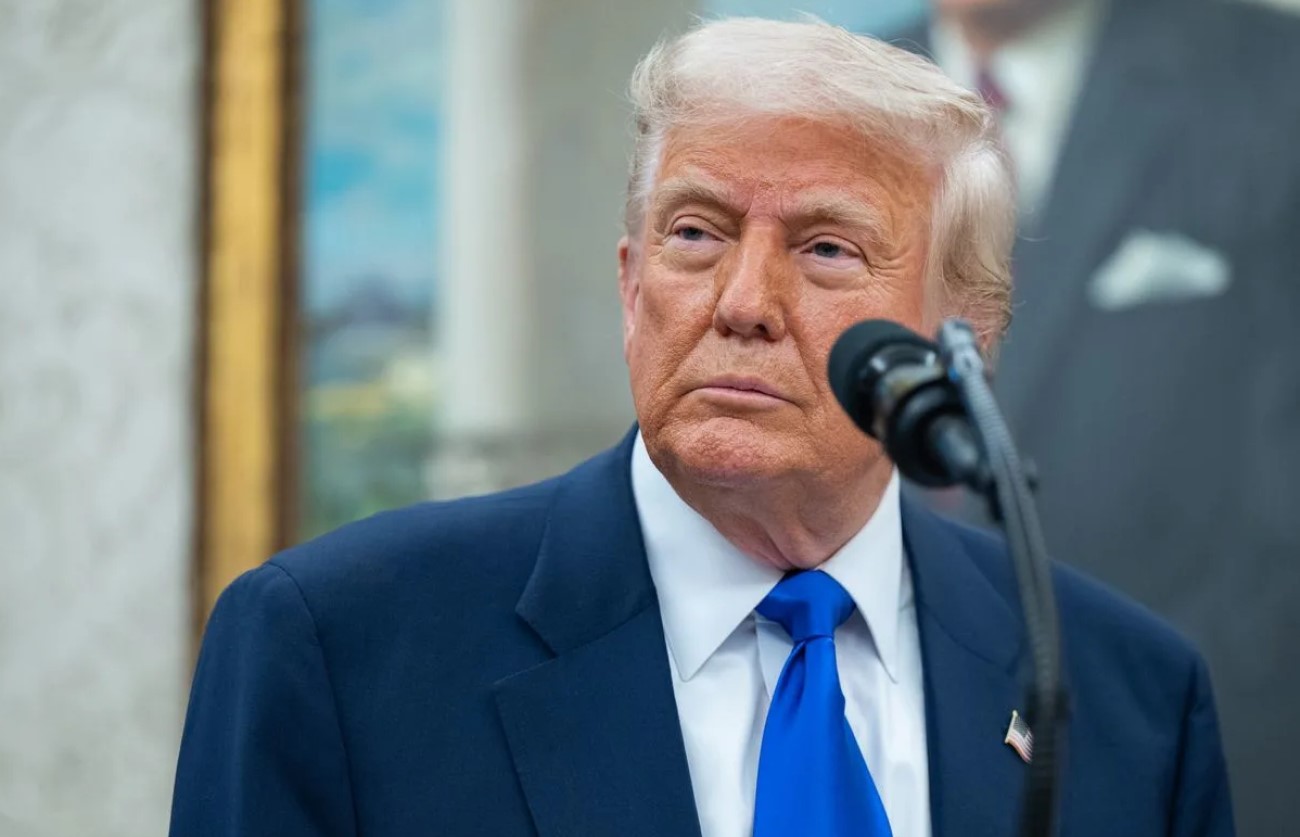In a move that has sent shockwaves through the cultural and academic communities, President Donald Trump has terminated the employment of Kim Sajet, the Director of the National Portrait Gallery, citing her support for diversity, equity, and inclusion initiatives. The dismissal, announced via Truth Social, represents one of the most high-profile cultural institution leadership changes since Trump’s return to office and signals a broader shift in how federal cultural agencies may operate under his administration.
The Dismissal and Its Immediate Context
President Trump’s decision to fire Sajet was announced through his characteristic medium of choice—Truth Social—where he delivered a pointed explanation for the termination. “Upon the request and recommendation of many people, I am hereby terminating the employment of Kim Sajet as Director of the National Portrait Gallery. She is a highly partisan person, and a strong supporter of DEI, which is totally inappropriate for her position. Her replacement will be named shortly. Thank you for your attention to this matter!” Trump wrote in the post.
The timing of this dismissal is particularly significant, coming just hours after Trump signed a sweeping executive order on Inauguration Day that eliminated all DEI programs from the federal government. This executive action represented one of the new administration’s first major policy initiatives, signaling a clear departure from the previous administration’s approach to diversity and inclusion in federal institutions.
The National Portrait Gallery, as part of the Smithsonian Institution, falls under federal oversight, making Sajet’s position particularly vulnerable to political changes. Her termination represents not just a personnel decision but a symbolic statement about the direction the Trump administration intends to take regarding cultural institutions and their programming.
The Contentious Portrait Caption
A specific catalyst for the dismissal appears to have been the gallery’s handling of Trump’s own portrait and its accompanying caption. The White House took particular issue with how Sajet’s curation team had described the former and current president’s historical record. The caption, which Sajet had overseen, read: “Impeached twice, on charges of abuse of power and incitement of insurrection after supporters attacked the US Capitol on January 6, 2021, he was acquitted by the Senate in both trials. After losing to Joe Biden in 2020, Trump mounted a historic comeback in the 2024 election. He is the only president aside from Grover Cleveland (1837-1908) to have won a nonconsecutive second term.”
White House officials found this description problematic, viewing it as editorial commentary rather than neutral historical documentation. The irony was not lost on administration officials that Sajet had previously stated her commitment to objectivity in museum curation. “We try very much not to editorialize. I don’t want by reading the label to get a sense of what the curator’s opinion is about that person. I want someone reading the label to understand that it’s based on historical fact,” Sajet had said in previous public statements.
This contradiction between Sajet’s stated principles and the perceived editorial nature of Trump’s portrait caption appears to have provided the administration with additional justification for her removal, beyond her support for DEI initiatives.
Sajet’s Vision and the Richardson Symposium Speech
To understand the broader context of Sajet’s dismissal, it’s essential to examine her public statements and curatorial philosophy, particularly her remarks at the National Portrait Museum’s Richardson Symposium: Racial Masquerade in American Art and Culture on November 4. During this gathering, Sajet delivered what would prove to be prophetic comments about identity politics and the role of cultural institutions in addressing social issues.
In her speech, Sajet acknowledged that she had spent the majority of her tenure focused on what she termed “identity politics,” stating: “America has never been able to separate a person’s appearance from their potential. Our history is filled, and continues to be, with examples of hatred, discrimination, fear, and alienation.” This admission would later be cited by critics as evidence of her partisan approach to museum curation.
Sajet’s speech took an even more political turn when she referenced a formative moment from December 7, 1972, when astronaut Jack Schmidt of Apollo 17 took the famous “Blue Marble” photograph of Earth. She described how this image had given her hope for humanity’s ability to overcome “petty differences” and think holistically about human experience. However, she contrasted this optimistic vision with her assessment of the contemporary political climate.
“Well, that utopian vision feels very, very far away today in the terrifying wake of the most uncivil, mistrustful, racially insensitive, sexually exploitative, factually untruthful, digitally manipulated, secretive, and inflammatory election of the modern era,” Sajet said, in what many interpreted as a direct criticism of the 2024 election that had returned Trump to power.
The National Portrait Gallery’s Role in Identity Politics
Perhaps most damaging to Sajet’s position were her explicit comments about the National Portrait Gallery’s mission and its relationship to identity politics. Rather than maintaining the traditional museum stance of neutral historical presentation, Sajet openly embraced a more activist approach to curation.
“The National Portrait Gallery, as I’ve mentioned, is all about identity politics, whether it is to defend the label text that says President Eisenhower was cautious on civil rights or explaining why only 25% of women were historically considered cool or standing firm or not, allowing Margaret Sanger, the founder of Planned Parenthood, to be removed from the Smithsonian or even outlining why we show the portrait of Sylvia Rivera, the transgender activist in the galleries,” Sajet stated during the same Richardson Symposium speech.
These comments revealed a curatorial philosophy that prioritized social justice messaging over traditional historical documentation. Sajet’s approach included highlighting figures like transgender activist Sylvia Rivera and defending controversial historical figures like Margaret Sanger, demonstrating her commitment to using the museum as a platform for progressive social commentary.
Her reference to “only 25% of women were historically considered cool” suggests a casual, contemporary approach to historical interpretation that critics argue lacks the scholarly rigor expected of major cultural institutions. This departure from traditional museum practices aligned with broader DEI initiatives but ultimately conflicted with the new administration’s vision for federal cultural institutions.
The Broader Pattern of Dismissals
Sajet’s termination was not an isolated incident but part of a broader pattern of removals within federal cultural and educational institutions. The Trump administration has moved swiftly to replace leadership in agencies perceived as resistant to its agenda or aligned with previous administration policies.
Just days before Sajet’s dismissal, the administration had already terminated Shira Perlmutter, who led the U.S. Copyright Office under the Library of Congress. Perlmutter received an abrupt email from the White House stating: “Your position as the Register of Copyrights and Director at the U.S. Copyright Office is terminated, effective immediately.” This summary dismissal, without the courtesy of a transition period or detailed explanation, set the tone for how the administration would handle leadership changes in cultural institutions.
Prior to Perlmutter’s termination, Trump had also dismissed Librarian of Congress Carla Hayden. Her removal was considered part of the administration’s broader effort to replace officials viewed as resistant to Trump’s agenda. The pattern of these dismissals suggests a coordinated effort to reshape federal cultural institutions by removing leaders who had implemented or supported progressive policies during previous administrations.
The Anti-DEI Executive Order
The dismissals must be understood within the context of Trump’s comprehensive executive order eliminating DEI programs from the federal government. This sweeping policy change, signed on Inauguration Day, represented one of the administration’s highest priorities and provided the legal framework for removing officials like Sajet who had championed diversity initiatives.
The executive order goes beyond simple policy changes to fundamentally restructure how federal agencies approach issues of diversity, equity, and inclusion. For cultural institutions like the National Portrait Gallery, this means a complete reversal of curatorial practices that had emphasized marginalized voices and social justice themes.
Under Sajet’s leadership, the National Portrait Gallery had actively pursued programming that highlighted underrepresented groups and challenged traditional narratives about American history. This approach, while celebrated by progressive academics and activists, was seen by the Trump administration as inappropriate politicization of cultural institutions.
Implications for Cultural Institutions
The dismissal of Kim Sajet sends a clear message to directors and curators throughout the federal cultural ecosystem about the expectations for their institutions under the new administration. The emphasis on DEI programming, identity politics, and social justice messaging that characterized many museums and galleries during the previous administration is no longer acceptable.
Cultural institutions will likely need to pivot away from exhibitions and programming that center on issues of race, gender, and social inequality. Instead, there may be a return to more traditional approaches to historical presentation that emphasize factual documentation over interpretive commentary.
The change also raises questions about academic freedom and the role of expertise in cultural institutions. Sajet’s dismissal was based not on professional incompetence or ethical violations but on her political views and curatorial philosophy. This precedent could have chilling effects on cultural professionals who may feel pressured to conform to political expectations rather than scholarly standards.
Looking Forward
As the Trump administration prepares to name Sajet’s replacement, the selection will be closely watched as an indicator of the direction federal cultural institutions will take. The new director will likely be someone who embraces a more traditional approach to museum curation, focusing on historical documentation rather than contemporary social commentary.
The broader implications of this leadership change extend beyond the National Portrait Gallery to the entire Smithsonian Institution and other federal cultural agencies. The message is clear: the era of museums as platforms for progressive social messaging has ended, at least within federal institutions.
The dismissal of Kim Sajet represents more than a simple personnel change; it symbolizes a fundamental shift in how the federal government views the role of cultural institutions in American society. Whether this change will ultimately strengthen or weaken these institutions remains to be seen, but the immediate impact is undeniable—the culture wars have come directly to America’s most prestigious museums and galleries.
Conclusion
The termination of Kim Sajet as Director of the National Portrait Gallery marks a pivotal moment in the intersection of politics and culture in American society. Her dismissal, justified by her support for DEI initiatives and her explicit embrace of identity politics in museum curation, signals a dramatic shift in federal cultural policy. As the Trump administration continues to reshape federal institutions, the ripple effects of these changes will be felt throughout the cultural sector, potentially redefining the role of museums and galleries in American public life for years to come.
The speed and decisiveness of these actions demonstrate the administration’s commitment to eliminating what it views as political bias in cultural institutions. Whether this approach will ultimately serve the public interest in preserving and presenting American history and culture remains an open question, but the immediate impact is clear: the age of activist curation in federal cultural institutions has come to an abrupt end.

Adrian Hawthorne is a celebrated author and dedicated archivist who finds inspiration in the hidden stories of the past. Educated at Oxford, he now works at the National Archives, where preserving history fuels his evocative writing. Balancing archival precision with creative storytelling, Adrian founded the Hawthorne Institute of Literary Arts to mentor emerging writers and honor the timeless art of narrative.
